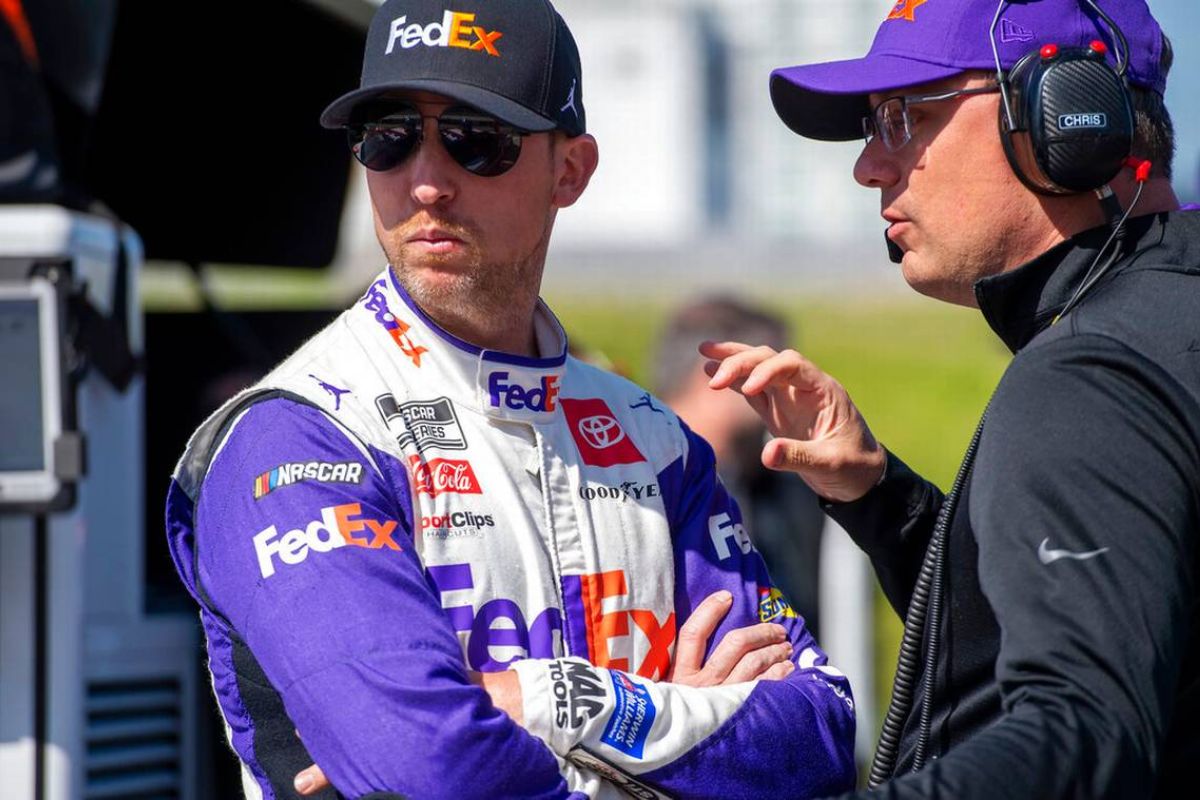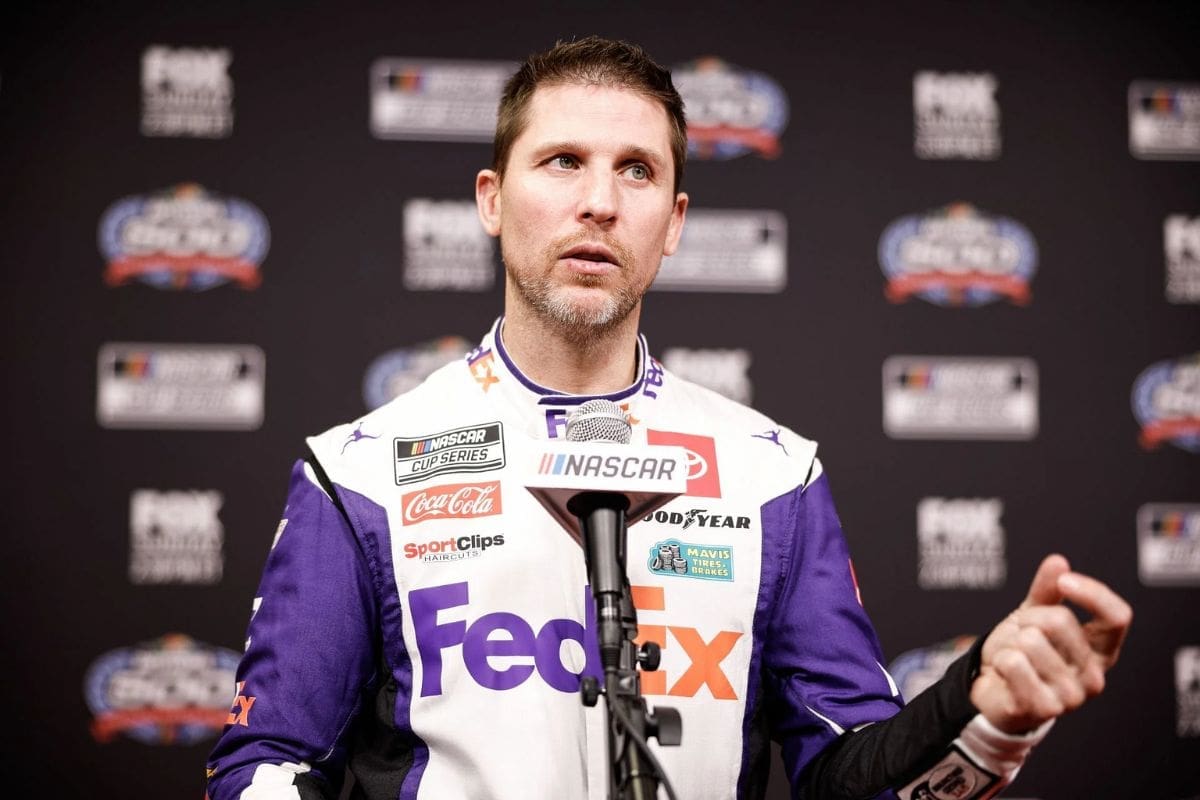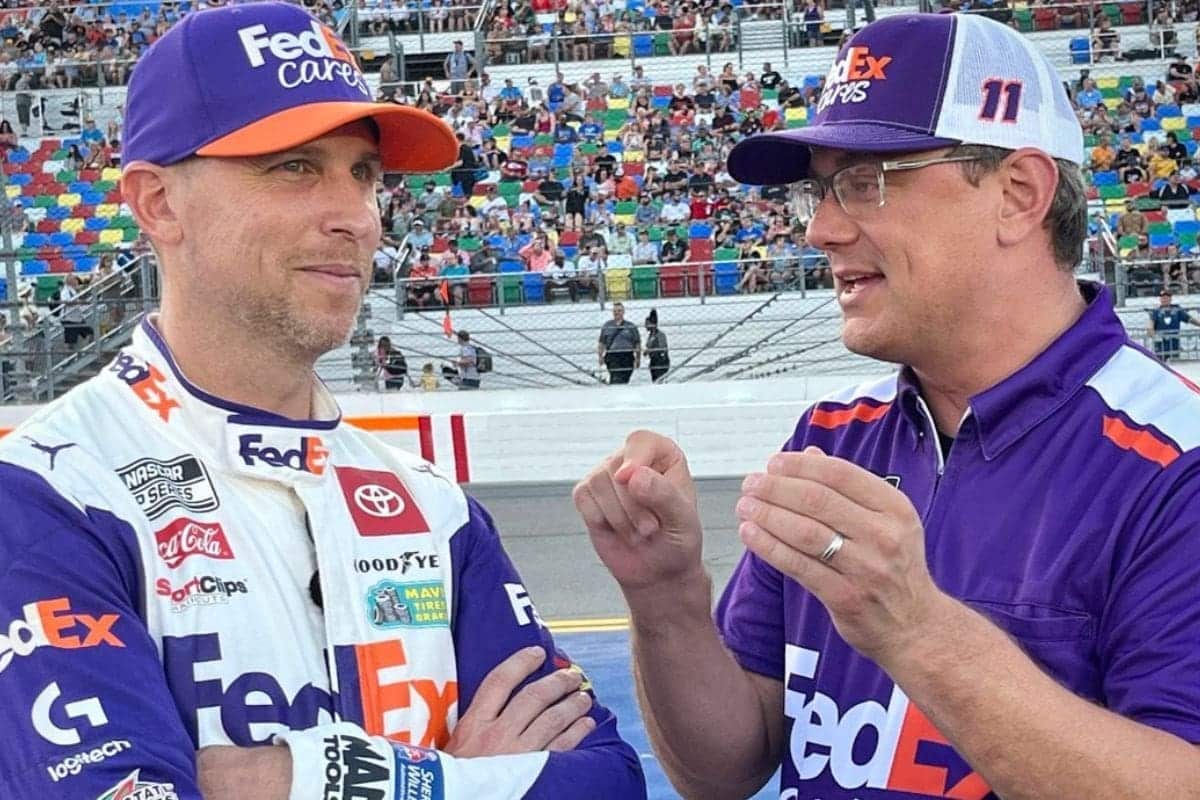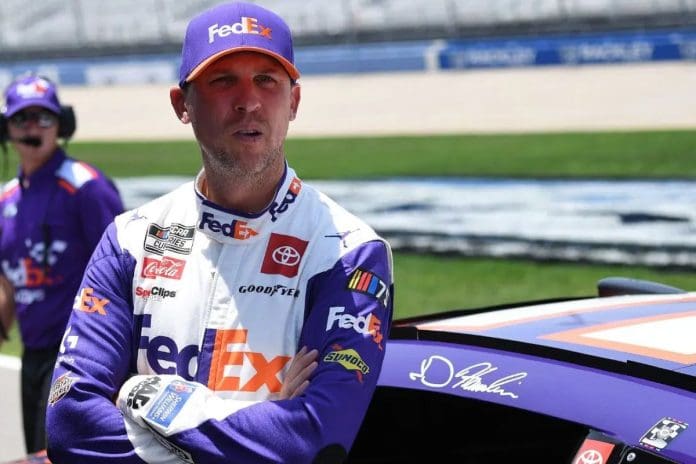Denny Hamlin Criticizes NASCAR: In a recent and unprecedented NASCAR event, Denny Hamlin vocalized significant criticism regarding a photo finish error, highlighting a crucial moment for the sport’s technological integrity. This controversy arose after a race that recorded the closest finish in NASCAR history, where initial results erroneously crowned Chris Buescher as the winner, later corrected to Chase Elliott. Hamlin’s critique brings to the forefront the critical need for NASCAR to reevaluate and possibly improve its finish line technology to avert similar discrepancies in the future, raising questions about the reliability of current systems in place. As stakeholders and fans await NASCAR’s response, the broader implications for the sport’s technological protocols remain a compelling point of discussion.
Key Takeaways
- Denny Hamlin criticized NASCAR’s finish line technology after a controversial race finish where he placed fifth.
- Hamlin highlighted issues with the accuracy of the photo finish system, suggesting a misalignment.
- He expressed concerns that Chris Buescher’s transponder initially indicated a different winner, questioning system reliability.
- Urged NASCAR to reevaluate and possibly overhaul their current timing and photo finish systems.
- Stressed the importance of precise and trustworthy technology to maintain the integrity of race results.
Controversy Surrounds Closest-Ever NASCAR Finish
The controversy surrounding NASCAR’s closest-ever finish has raised serious questions about the integrity and accuracy of the race’s final results. In the race at Kansas, Kyle Larson edged out Chris Buescher by the slimmest margin recorded in NASCAR history, just 0.001 seconds. Such a razor-thin victory margin immediately highlighted the precision of NASCAR’s finish line technology and procedures.
Critics and fans equally have scrutinized the finish, especially after observations emerged that the start-finish line appeared to be misaligned, seemingly favoring Larson’s #5 Chevy. The alignment of the start-finish line is crucial in ensuring a fair and unbiased evaluation of race results, particularly in photo finishes where the difference between victory and the runner-up place can be nearly indiscernible to the naked eye.
This incident brings to light the technological mechanisms employed by NASCAR in verifying race results. Typically, NASCAR utilizes advanced photo finish cameras that capture thousands of frames per second. However, the effectiveness of this technology depends on the precise calibration and alignment of the camera with the start-finish line. Any deviation, no matter how slight, can cast doubts over the authenticity of the result.

Denny Hamlin Weighs In on Controversy
Denny Hamlin, a seasoned NASCAR driver, expressed significant concerns regarding the accuracy of the finish line technology after his fifth-place finish in the controversial Kansas race. His observations highlighted a critical moment when Chris Buescher’s transponder briefly registered as the unofficial winner post-race, stirring debates over the reliability of NASCAR’s finish detection system. Hamlin’s remarks underline a broader issue within the sport, where technological accuracy is paramount.
In his detailed critique, Hamlin pointed out the potential repercussions of such discrepancies, emphasizing the need for NASCAR to address these concerns promptly to maintain the integrity of the competition. His feedback serves as a crucial call to action, urging for a review and possibly an overhaul of the current systems in place.
| Aspect | Details | Implications |
|---|---|---|
| Finish Line Accuracy | Buescher’s transponder error | Questions system reliability |
| Hamlin’s Finish | Registered fifth place | Personal stake in accuracy |
| Technology Review | Urges NASCAR for evaluation | Suggests potential overhaul |
| Competitive Integrity | Stresses maintaining fairness | Vital for sport’s image |
| Driver’s Perspective | Provides firsthand experience | Adds credibility to concerns |
NASCAR’s Timing System and Hamlin’s Analysis
NASCAR’s important timing system, which utilizes transponders and embedded track timing lines, has come under scrutiny following Hamlin’s observations of significant discrepancies. These high-tech transponders, attached to each vehicle, are intended to guarantee precise tracking of the cars as they cross different timing lines laid out along the track, culminating in the critical start-finish line. However, Hamlin’s critique brings to light a potential flaw in the placement or calibration of these timing mechanisms.
Hamlin’s analysis suggests that the positioning of the transponders in relation to the actual start-finish line might not be as precise as intended. He proposes an adjustment in the timing line’s setup to better reflect the true finish of a race. This is not just about recalibrating equipment but rethinking the spatial dynamics of race finishes. The implication here is significant: even a minor misalignment could alter the outcome of races, affecting not just race results but the integrity of the sport itself.
Understanding the technical specifics of how these transponders interact with embedded lines is important. Typically, these systems are designed to provide millisecond accuracy. The transponders emit signals that are captured as they cross over the embedded lines, instantly transmitting data back to race control. This data should, theoretically, provide an unambiguous record of the order in which cars cross the finish line.

NASCAR’s Response and Clarification
In response to the controversy, officials clarified that race finishes rely on a sophisticated photo system, supplementing traditional technologies to improve accuracy and fairness. NASCAR’s assertion rests on the integration of advanced photographic and sensor technologies that are designed to offer a definitive snapshot of race outcomes, particularly in photo finishes which are too close to be discerned by the human eye alone.
The photo finish system employed by NASCAR utilizes high-resolution cameras positioned at the finish line. These cameras capture images at a fraction of a second, providing a clear and indisputable record of the exact positions of vehicles as they cross the line. This system is critical in ensuring that the results are not only accurate but also impartial, thereby upholding the integrity of the competition.
| Component | Function | Significance |
|---|---|---|
| High-Speed Cameras | Capture rapid succession images at the finish line | Guarantees precise vehicle positioning |
| Timing Sensors | Detect the exact moment a car crosses the finish line | Provides a supplementary verification layer |
| Analysis Software | Interprets camera and sensor data | Delivers swift and accurate race results |
Lessons Learned and Perspective from Hamlin
Reflecting on the recent photo finish dispute, Hamlin highlighted the educational value such incidents offer, emphasizing the ongoing need for precision in NASCAR’s adjudication processes. He articulated how these high-stakes moments, while critical, are essential in emphasizing the importance of unerring accuracy in race finish technologies and the interpretation thereof. This incident not only serves as a case study for continuous improvement but also reinforces the significance of integrating robust, fail-safe mechanisms to uphold the integrity of the sport.
Hamlin’s perspective is deeply informed by his own experiences on the track, where the adrenaline and intensity of racing can sometimes lead to confusion and misconceptions about the outcomes. He recalled a previous race where a similar situation occurred, stressing how it initially fostered a sense of uncertainty and frustration among drivers and teams. This, according to Hamlin, illustrates the complex interplay between human factors and technological aids in sport, where both must be seamlessly aligned to deliver justice and fairness.
From a broader viewpoint, Hamlin’s reflections suggest a need for ongoing dialogue and partnership between drivers, teams, and NASCAR officials to refine their approach to such scenarios. He demands for a proactive stance in technology application, regular updates, and perhaps most critically, transparent communication channels that allow for real-time feedback and adjustments.

News in Brief: Denny Hamlin Criticizes NASCAR
The incident involving a disputed photo finish in NASCAR highlights the critical need for impeccable accuracy in race adjudication technologies. Denny Hamlin’s vocal criticisms serve as a catalyst for necessary technological reviews and improvements in NASCAR’s systems.
Ensuring the reliability and integrity of these systems is paramount for upholding the sport’s credibility and fostering trust among the competitors and spectators. This episode emphasizes the ongoing necessity for technological evolution in sports adjudication.
Our Reader’s Queries
Q: Did Denny Hamlin get penalized at Richmond?
A: Sawyer affirmed Tuesday that Hamlin indeed initiated the restart prematurely. Despite this observation, NASCAR’s review concluded without penalization, allowing Hamlin to secure victory in the race.
Q: Has Denny Hamlin ever won on a road course?
A: Hamlin clinched his inaugural road course triumph, leading just 10 of the 90 laps in the race, yet asserting dominance when it mattered most, capturing victory in the crucial final moments.
Also Read: Denny Hamlin’s Bold Declaration: “This Is the Year” for Championship


